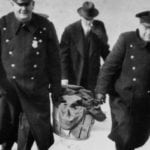 Mysteries
Mysteries  Mysteries
Mysteries  History
History 10 Surprising Stories About the Texas Rangers
 Humans
Humans 10 Philosophers Who Were Driven Mad by Their Own Theories
 Miscellaneous
Miscellaneous 10 Video-Game-Worthy Weapons and Armors from History
 Weird Stuff
Weird Stuff 10 Psychics Who Accurately Predicted Wartime Events
 The Arts
The Arts 10 Pieces of Art Inspired by a Broken Heart
 Health
Health 10 Science Fiction-Sounding New Medical Treatments
 History
History 10 Surprising Facts About the Father of Submarine Warfare
 Space
Space Ten Astonishing New Insights into Alien Worlds
 Weird Stuff
Weird Stuff 10 Bizarre Summer Solstice Rituals Still Practiced Today
 Mysteries
Mysteries Top 10 Haunting Facts About the Ghost Ship MV Alta
 History
History 10 Surprising Stories About the Texas Rangers
 Humans
Humans 10 Philosophers Who Were Driven Mad by Their Own Theories
Who's Behind Listverse?

Jamie Frater
Head Editor
Jamie founded Listverse due to an insatiable desire to share fascinating, obscure, and bizarre facts. He has been a guest speaker on numerous national radio and television stations and is a five time published author.
More About Us Miscellaneous
Miscellaneous 10 Video-Game-Worthy Weapons and Armors from History
 Weird Stuff
Weird Stuff 10 Psychics Who Accurately Predicted Wartime Events
 The Arts
The Arts 10 Pieces of Art Inspired by a Broken Heart
 Health
Health 10 Science Fiction-Sounding New Medical Treatments
 History
History 10 Surprising Facts About the Father of Submarine Warfare
 Space
Space Ten Astonishing New Insights into Alien Worlds
 Weird Stuff
Weird Stuff 10 Bizarre Summer Solstice Rituals Still Practiced Today
10 Overlooked Facts About The Spanish Reconquest
The Spanish Reconquest, also known as the “Reconquista,” is one of the most pivotal aspects of European history. The Christian attempt to recapture Spain from Muslim rule spanned centuries and was rarely a consistent effort. Owing to squabbles between the various Christian kingdoms as well as successful campaigns undertaken by the Muslim rulers of al-Andalus (the Arabic name for Iberia), the Reconquista lasted from the eighth century AD until the late 15th century.
Most writers will date the end of the Reconquest at January 2, 1492, for on that day, the final redoubt of Muslim power, Granada, fell to the allied Christian forces of King Ferdinand V and Queen Isabella I. Following this triumph, an emboldened Spain ventured forth into the New World. Along with Portugal, another mostly Christian nation that experienced Muslim rule for centuries, the Spanish crown established a global empire that peaked in the 16th century.
As with most history, the usual story about the Reconquest is too neat. For starters, Spanish Muslims continued to exist after 1492, and their eventual expulsion from Spain was due to the rebellions that followed the successful conclusion of the Reconquista. Furthermore, the Reconquest involved many more players than just the Christian kingdoms of Spain. The protracted war touched France, Portugal, North Africa, and the various ethnic minorities of Western Europe. The full story of the Reconquest is rarely told. This list hopes to shed some light on the war’s darker corners.
10 Spain Was An Invasion Magnet Before the Reconquest

Brazilian sociologist Gilberto Freyre became famous for arguing a sort of novel theory in defense of colonialism. According to Freyre, the Portuguese were better imperialists and colonizers than other Europeans because of their history of miscegenation. Called “Lustrotropicalism,” Freyre’s theory essentially claims that because Portuguese people are an amalgam of Iberian, Celtic, Roman, and Berber bloodlines, they are more willing to interbreed with their colonial subjects, be they Native Brazilians, Chinese, or Africans. As a result, the long-lasting Portuguese Empire successfully created a sort of “racial democracy,” whereby ethnic and racial identity was allowed to flourish so long as a shared sense of Portuguese culture remained.
This theory has been scrutinized and criticized since its first publication, but Freyre is undoubtedly right that Portugal and Spain have seen their fair share of population mixing. Spain, for instance, once sported both Phoenician and Greek colonies. Even the Etruscans of Italy founded merchant colonies in ancient Iberia. The Spanish port city of Cadiz has a history that is especially tied to non-Iberian outsiders, for the city itself was founded by Phoenician traders from the city of Tyre. During the Second Punic War, the modern Spanish city of Cartagena was known as New Carthage and was the capital of Carthaginian-controlled Iberia.
Before the beginning of the Reconquest, Spain, which had long been a source of horses, fighting men, and generals for the Roman Empire, experienced several invasions from the Germanic tribes of Central and Northern Europe. During the early fifth century AD, Vandal, Alan, Suebi, and Asding raiders took control of large swaths of Spain. By the mid-fifth century, the Vandals, under kings Gunderic and Gaiseric, established themselves as the chief rulers of Iberia and North Africa. When the first Muslim armies invaded Spain, the force that opposed them was primarily composed of Visigothic Christians, the Germanic rulers of both Spain and Portugal.
9 The Battle That Kick-Started The Reconquest
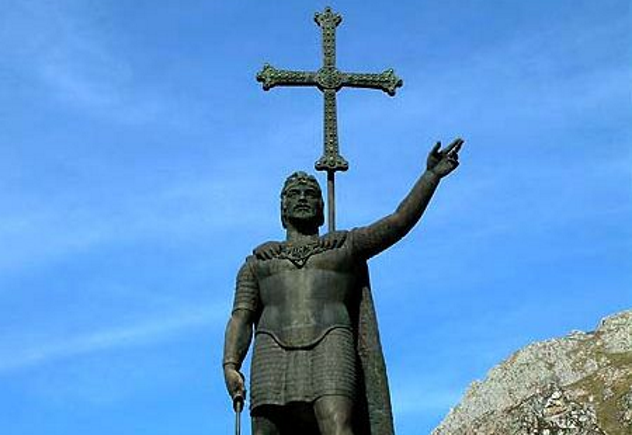
The Battle of Covadonga is controversial among historians. Some label it as nothing more than a minor skirmish, while others have called it the most important Christian success in Spain during the eighth century. Whatever the case, the Battle of Covadonga certainly helped to change the tide of the Muslim takeover of Spain, even if that change was small.
In the summer of 722 AD, a small band of Visigothic nobles led by Pelagius had fled to the Bay of Biscay, a mountainous and rainy region that was known for its stubborn independence. There, the Visigoths combined forces with local Iberian and Celtic fighters in order to repel a much larger Umayyad army. From their cave headquarters, which they called Santa Maria, the Christians, who numbered somewhere around 300 men, squared off against a Muslim force numbering somewhere between 25,000 and 180,000.
For their part, the Umayyad Moors were not terribly interested in occupying Northern Spain. However, given that Pelagius (sometimes spelled as Pelayo) and his men refused to pay the jiyza, the tax on non-Muslims, the Umayyad generals Munuza and Al Qama sought to rid themselves of the last Christian thorn in their sides. According to most Christian accounts of the battle, after Pelagius refused an offer to peacefully surrender, the best Muslim fighters were sent into the valley as shock troops. From their cave hideout, the Christians rushed into the valley with the element of surprise in their favor. Depending on the source, the Muslim losses were either disastrous or hardly worth noting.
Following his victory, peasants in and around the Bay of Biscay took up arms and began to attack the retreating Muslims. With Pelagius as their leader, they established the Kingdom of Asturias, the first Christian kingdom in Muslim-dominated Iberia. After a larger Muslim force failed to capture Asturias a few years later, Pelagius and the subsequent kings of Asturias began to capture parts of northern Spain and Portugal, such as Galicia, Leon, and Castile.
8 The Frankish War With The Basque
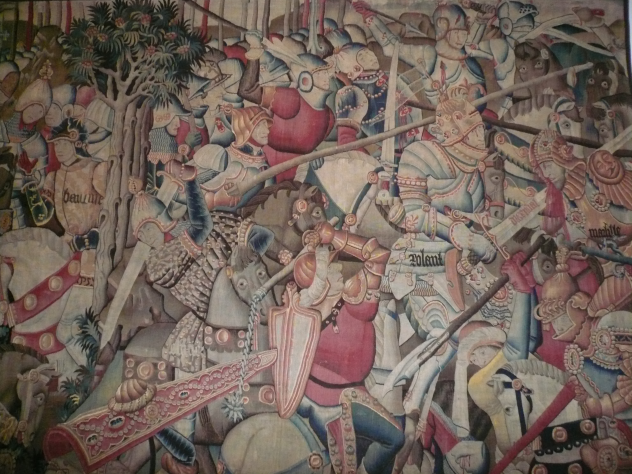
During the early years of the Muslim conquest of Spain, the chief power in Europe was France. Prior to capturing what was then called Gaul, the Franks had been feared border guards for the Western Roman Empire. They were also noted for their piracy. All told, the Franks were a fearsome force of Germanic “barbarians” who successfully captured Gaul in the late fifth century following the collapse of Rome. Amazingly, despite being a minority in a country mostly composed of Gallo-Roman citizens, the Franks managed to maintain power for centuries. In fact, it was the Franks who saved Christian Europe from further Arab Muslim conquest with Charles Martel’s victory at Tours in 732, and it was also the Frankish Merovingian Kingdom and the Carolingian Empire that saved Greco-Roman culture from disappearing during the so-called Dark Ages.
By the eighth century, Frankish power was expanding drastically under the brilliant leadership of Charlemagne. As Frankish power consolidated to the east, Charlemagne sought to achieve Frankish success in the west, namely in Spain. While Christian and Muslim armies battled for territory, Charlemagne received an offer from Sulaiman Ibn al-Arabi, the Muslim governor of Barcelona. Fearing that his city might fall into the hands of the Christian Spanish, al-Arabi offered Charlemagne an alliance. For agreeing to protect Barcelona against any Christian invasion, Charlemagne was promised territory in Spain.
Accordingly, in 777 AD, an army led by Charlemagne crossed the Pyrenees Mountains and quickly captured the city of Pamplona. Next, the Franks captured Zaragoza but met with stiff resistance from that city’s Muslim governor. Ultimately, Charlemagne abandoned Zaragoza after receiving a fortune in gold. When a Saxon rebellion began to cause trouble, Charlemagne decided to return to France. But before reaching the Pyrenees, Charlemagne destroyed Pamplona’s defenses so that the city could never be used as a base for future attacks into Frankish territory.
In August 778, Charlemagne’s army had become a long, vulnerable train. As such, Roland, the prefect of Breton March and one of Charlemagne’s best generals, was given the task of securing the army’s rear guard. On August 15, Roland’s force came under attack. Their enemies were Basque irregulars who sought revenge for Charlemagne’s assault on Pamplona, which was one of the most important centers of Basque power in Spain. The Basque attack, which became known as the Battle of Roncesvalles, was a disaster for the Franks. However, the incredible courage shown by Roland and his men inspired the epic poem “The Song of Roland,” the oldest major work of French literature. In the poem, instead of fighting Basque guerrillas, Roland and his men are set upon by Muslim fighters from Spain.
7 The Birth Of A Separate Catalonia
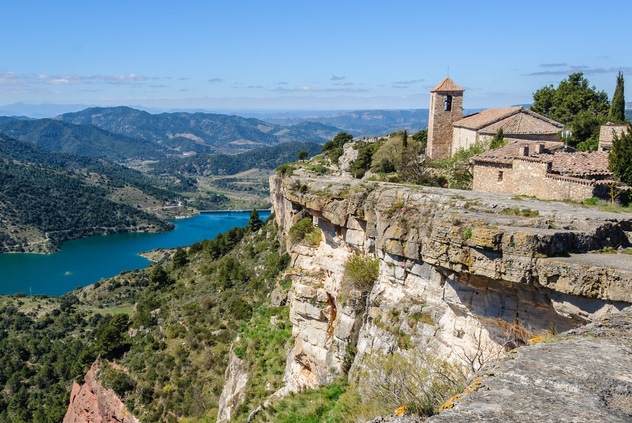
Despite the Basque victory at Roncesvalles and Charlemagne’s earlier alliance with al-Arabi, he still sought a buffer zone between his Christian kingdom and the Muslims of Spain. So, in the late eighth century, the Franks returned to Spain. First, Charlemagne’s army ended the Muslim occupation of Southern France and thereby created the March of Septimania. Next, Charlemagne attempted to retake Zaragoza but failed. Then, in 801, Charlemagne netted a major prize when his army successfully occupied the important city of Barcelona. From there, the Franks conquered most of Catalonia and established it as the Spanish March—a reinforced buffer state designed to stop Muslim armies from reaching France.
For two centuries, the Spanish March was ruled by Frankish or local counts appointed by Charlemagne’s court. This lasted until 985, when a Moorish force under the leadership of Al-Mansour managed to sack Barcelona. Incensed that he had received zero assistance from the Carolingian army, Count Borrell II declared the state of Catalonia independent of Frankish rule. Even before this declaration, Catalonia had enjoyed widespread autonomy, which in turn allowed a separate identity to form. Arguably, the roots of Catalan independence formed at this time.
6 The Granada Massacre Of 1066

It has long been a common conceit that during Muslim rule in Spain, Iberian Jews experienced a cultural “golden age.” Especially under the independent Emirate of Cordoba, Sephardic Jews enjoyed an almost idyllic existence on an island of religious tolerance surrounded by a sea of Christian intolerance. While there may be kernels of truth to this, for the most part, Spanish Jews were not entirely appreciated by their Muslim superiors.
More broadly speaking, Islamic Spain was no more tolerant or open-minded than Christian Europe. Underneath the Umayyads, the Emirate of Cordoba, and the Almoravids, books deemed blasphemous were publicly burned and their authors imprisoned and executed. Likewise, although Christians and Jews could attain high positions in the government, they were always considered second-class citizens and were forced to pay the jiyza if they did not convert to Islam. Indeed, many jihadist terrorists today uphold Islamic Spain not as a beacon of multicultural hope, but as a perfect example of a country ruled by Islamic fundamentalism.
No action highlights the false myth of an enlightened Spain under Muslim rule like the Granada Massacre of 1066. On December 30, 1066, an estimated 4,000 Jews were killed by a Arab mob in the important Andalusian city of Granada. What sparked this violence has long been debated, but a general consensus claims that the Jews of Granada were the unfortunate scapegoats in a sociopolitical conflict between the North African Arabs and the Berbers. As was the case in most of the Islamic world, Arabs in Islamic Spain were considered a privileged class. The Berbers, many of whom belonged to Islamic sects that were considered “heretical” by the Sunni Arabs, therefore often struck out against what they believed were anti-Berber political policies.
While it’s just as likely that a popular anti-Semitic poem by Abu Ishaq of Elvira gave breath to the pogrom, the massacre ended with the gruesome crucifixion of Joseph ibn Naghrela, the Jewish vizier to the Berber king of Granada.
5 The Involvement Of The Knights Templar
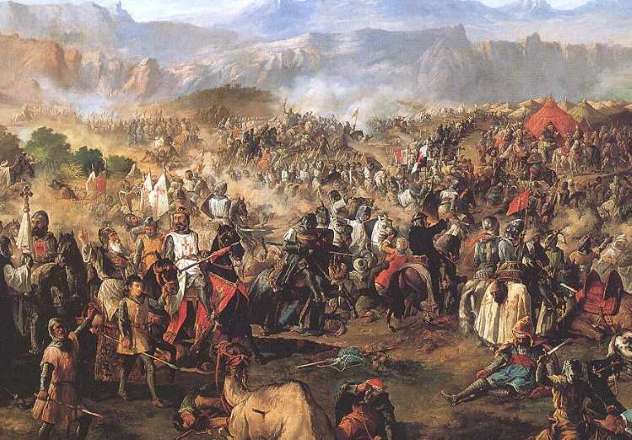
Although the Knights Templar were primarily a French military order led by and composed of French knights, other orders from different European kingdoms existed as well. One force led by a Portuguese master knight named Gomes Ramires fought alongside the Christian kingdoms of Aragon, Portugal, Navarre, and Castile during the Battle of Las Navas de Tolosa in 1212. The battle, which is considered one of the more important battles of the entire Reconquista, was a massive success for the Christian alliance.
The origins of the battle start with a failed truce between Alfonso VIII of Castile and Abu Yusuf Yaqub al-Mansur. By 1209, after a series of military setbacks, Pope Innocent III was encouraging Spanish Christians to continue on with the reconquest of Spain. Exploiting the weakness of Muhammad al-Nasir, Abu Yusuf’s son and successor, Castile and its allies captured the cities of Jaen and Murcia and founded the town of Moya in 1210. Pedro II of Aragon also captured the cities of Adamuz, Sertella, and Castellfabib.
In order to stop further Christian success, especially in the Muslim province of Valencia, al-Nasir began a siege of Toledo, the capital city of Castile. Although this siege failed, Al-Nasir still managed to capture the castle of Salvatierra. The next spring, when Al-Nasir launched a second siege of Toledo, the Pope called for a crusade, which attracted knights from France, Navarre, Portugal, Leon, and other kingdoms.
In July 1212, approximately 100,000 Christian soldiers, including Templars, faced off against approximately 120,00 Almohad troops, most of whom were North African Berbers. As in the Battle of Covadonga, the Christian forces used the element of surprise to their advantage and slaughtered their Muslim foes in a valley just northwest of Jaen.
Although most of the Templars had returned to France and Portugal by this point, their small contribution to the battle helped Alfonso VIII to capture the cities of Baeza and Ubeda. Furthermore, by 1233, Almohad control over Spain was no more due to internal feuding in North Africa.
4 The Conquest Of Ceuta
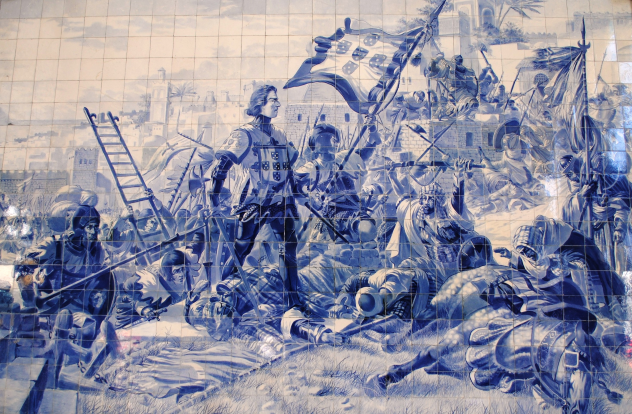
The Spanish Reconquista involved much more than just Spain. As already noted, France played an important role in the centuries of warfare between Spanish Christians and Muslims. The Kingdom of Portugal was likewise a key mover and shaker in the recapture of the Iberian Peninsula. In 1415, the Portuguese king John I brought the war beyond Spain’s borders when he led an expedition to the North African port of Ceuta, which was then controlled by the Marinid Empire, a Berber dynasty which controlled much of modern-day Morocco, Algeria, and Tunisia.
Along with Henry the Navigator, some 200 Portuguese ships containing about 20,000 men landed at Ceuta and caught the city’s defenders off guard. The battle was incredibly lopsided, and Portuguese control over Ceuta was quickly established. Following their success at Ceuta, the Portuguese crown decided to capture the islands of Madeira, Porto Santo, the Azores, and Cape Verde soon thereafter.
By the 1460s, the Kingdom of Portugal had established trading outposts in West Africa. Unfortunately for Portugal, due to large-scale Spanish immigration, Ceuta sided with the Crown of Spain during the Portuguese Restoration War. Eventually, King Carlos II of Spain was awarded the colony by King Alfonso VI of Portugal in 1668. Since then, Ceuta has remained a troubled possession that has been frequently fought over.
3 The Aborted Plot Against King Alfonso X
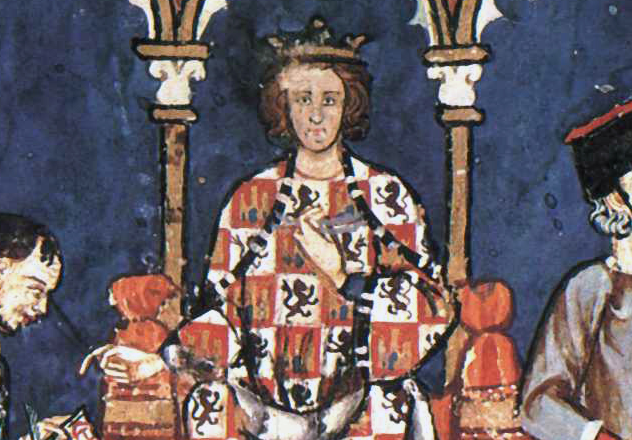
By the mid-13th century, the war for Spain was clearly being won by the Christians. The western edge of North Africa was bitterly divided between the Almohads and the Marinids, which helped to weaken the fighting abilities of the Muslim kingdoms in Spain. The only kingdom strong enough to repeatedly resist Christian advances was the Kingdom of Granada in the thoroughly Muslim province of Andalusia. However, even Granada needed to keep the sea lanes open to North Africa in order to guarantee its survival. When King Alfonso X of Castile threatened to capture and occupy the Straits of Gibraltar, Mohammad I ibn Nasr, the founder of the Nasrid dynasty in the Kingdom of Granada, decided to fight.
Specifically, Mohammad I decided to use subterfuge in order to keep the Castilian crown from gaining a strong foothold in Southern Spain. Along with Ibn Hud, the Muslim ruler of Murcia and a vassal of Castile, Mohammad I readied a revolt among all Castilian Muslims. Sometime in 1264, the Muslim inhabitants of Seville were supposed to capture Alfonso X, but they failed to do so because the king was not in the city when the revolt erupted. Nevertheless, in May 1264, a full-fledged Muslim revolt against Castilian rule was underway and was bolstered by the addition of 3,000 Almohad warriors from Morocco.
The revolt managed to successfully capture several Andalusian cities until Alfonso X decided to act. Along with his Aragonese allies, Alfonso X’s Castilian army captured and annexed Murcia. Although a future revolt in 1272 forced the Castilian crown to concede some autonomy to Granada, Alfonso X’s successes in 1264 helped to secure much of Southern Spain for future Christian conquest.
In 1309, the Kingdom of Castile won Gibraltar for the first time after a siege. Then, in 1497, the North African port of Melilla was conquered by King Ferdinand II and Queen Isabella.
2 The Rise Of Castile And Aragon
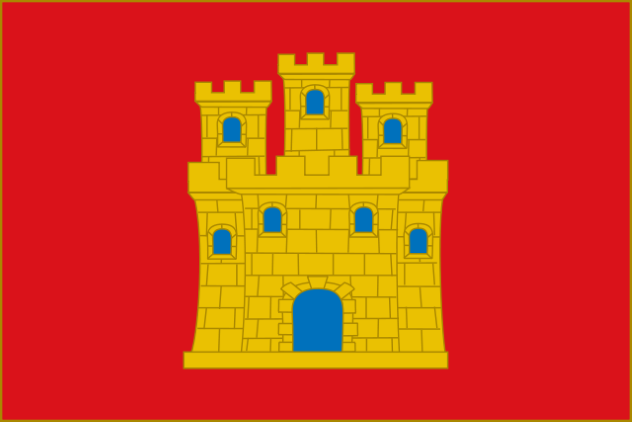
Although many countries have regionalistic divisions, few are as deeply divided as Spain. In modern Catalonia, the separatist position is especially strong, with one poll in 2014 indicating that 80 percent of Catalans prefer independence. While a large portion of this sentiment is based on economics (Catalonia is Spain’s richest region, and some feel that it has to constantly bail out underperforming provinces), an even greater chunk stems from Spain’s long history of regional autonomy. Like Catalonia, Spain’s Basque region is likewise a hotbed of separatism. Interestingly, during the Reconquista, many of today’s Spanish provinces ruled separately as independent kingdoms. As such, cultural and linguistic differences between Spanish regions deepened.
That being said, the age of the Reconquista also saw the first steps toward Spanish unification. The main drivers of this push were the kingdoms of Castile and Aragon. For the latter, independence came after breaking away from the Kingdom of Navarre and pushing the region’s sizable Muslim population further south. During the medieval period, Aragon became a major European empire that stretched from Spain to Greece.
While Aragon expanded eastward, the Kingdom of Castile (later the Crown of Castile) remained the most active proselytizer of the Reconquista. Through marriage and conquest, Castile became the most powerful Christian state in Europe by the 16th century. To this day, the influence of Castilian power during the Reconquista can be seen in the fact that the Castilian dialect of Spanish is the standard form of Spanish used by television stations and newspapers to this day.
1 The Last Muslim Revolts
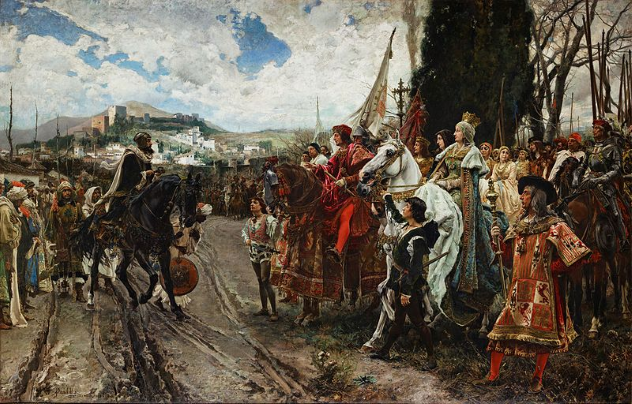
The capture of Granada in 1492 certainly ended the offensive phase of the Reconquista, but the establishment of a fully Christian Spain was far from complete. Pursued by the Spanish Inquisition, a policy of forced conversions was adopted. Jews and Muslims were converted en masse, sometimes willingly but more often by force. The Muslims of Spain became Moriscos, or “Little Moors,” who outwardly practiced Christianity.
Despite this sweeping campaign of religious pacification, many Spanish rulers continued to distrust their formerly Jewish and Muslim neighbors. Even though most Spanish Moriscos outside of Andalusia couldn’t speak Arabic and had few solid attachments to the larger Muslim world, the rulers of Castile, Aragon, and the other Christian kingdoms continued to question their loyalty. Making all of this worse was the fact that by the 16th century, Catholic Spain had two major enemies in Europe—the Protestants and the Ottoman Empire, who could find ways to support a Morisco rebellion if they decided to do so.
Beginning in 1499, the Muslims of Granada openly rebelled against Christian rule. While the city itself was easily reconquered, the Andalusian countryside remained in rebellion until the forced baptisms of 1501. Over 60 years later, the Moriscos of Granada revolted again after the inquisitor Pedro de Deza forbade the use of Andalusian Arabic in public and private and required all Moriscos to speak only Castilian Spanish.
Beginning in the Albaycin neighborhood of Granada in 1568 and spreading to the mountains of Alpujarras, this second rebellion was far bloodier than its predecessor. It was also far more frightening to the Christian Spanish, for the revolt’s leader, a Morisco named Aben Humeya, was not only related to the former emirs of Cordoba, but also publicly renounced Christianity and sought the return of Muslim rule in the South. More troubling still, while the rebellion had its roots in Morisco discontent, its was economically supported by Algiers and the Ottoman Turks.
By 1570, the war had become a guerrilla campaign of international proportions. A year later, Christian forces led by Don Juan of Austria had killed the remaining rebels, expelled all Moriscos from Granada, and encouraged Christians to settle in the newly abandoned mountain villages.
Benjamin Welton is a freelance writer in Boston. He currently blogs at literarytrebuchet.blogspot.com.



